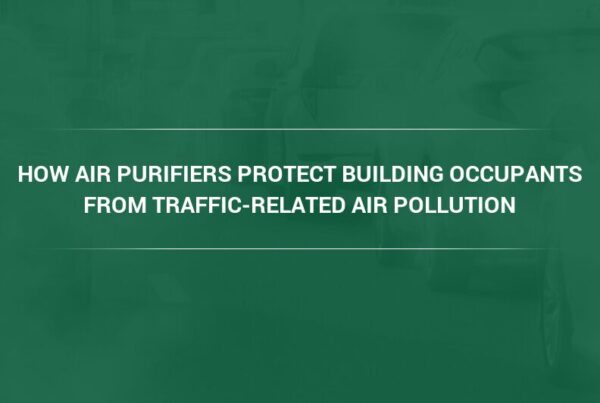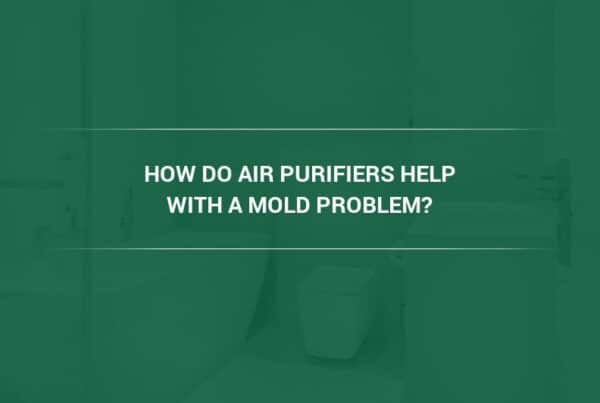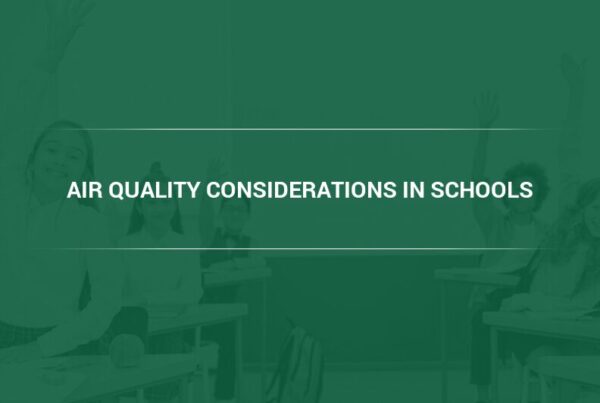As temperatures start to drop across the United States and people gather indoors more often, influenza and other respiratory illnesses will begin to make the rounds. Continue reading to learn more about how air purifiers can be used to prevent the spread of the flu, the common cold, COVID-19, and other airborne illnesses this winter.
Why Do More People Get Sick in the Winter?
Increased respiratory and other infections during the fall and winter have been attributed to various factors, as suggested by health experts. These factors include:
- Many pathogens are more effective at multiplying in lower temperatures.
- During cold weather, people tend to gather indoors in both large and small groups, often for extended periods. Respiratory illnesses are less likely to spread outside due to better air circulation and less physical closeness between people compared to indoor spaces.
- During winter, our immune systems tend to be less effective. As our bodies prioritize vital functions like regulating internal temperature, less urgent functions such as the immune system take a backseat. This leaves us more susceptible to viruses and bacteria when exposed to them.
Read More: Why Do We Get Sick More In Cooler Months
Common Airborne Illnesses
It is important to be aware of some of the most common airborne illnesses so that you can take the appropriate strategies to prevent specific illnesses as infection rates rise in your area. Common and highly infectious airborne illnesses include:
- COVID-19
- Influenza (the flu)
- Most strains of the common cold
- Respiratory syncytial virus (RSV)
- Strep throat
- Chickenpox
Other serious, often deadly, illnesses, such as measles, mumps, rubella, and tuberculosis, are also transmitted primarily through airborne routes. However, it is important to note that the preventative strategies shared in this article are only effective against airborne illnesses, and other strategies must be implemented against pathogens that spread primarily through direct contact.
How do Illnesses Spread through the Air?
When we breathe, microscopic droplets of fluid are released into the air with every exhale, which linger in the air for varying periods of time depending on the size of the particle. This also happens when we cough and sneeze, or talk and laugh. When someone is carrying a pathogen—which does not always cause them to exhibit symptoms of illness—these respiratory droplets contain virus or bacteria particles. When others inhale infected droplets and become infected themselves, this is known as airborne transmission. There are two types of airborne transmission: droplet and aerosol transmission.
Droplet transmission occurs when an infected person is in close contact with others, who directly inhale their infected respiratory droplets.
Aerosol transmission occurs when smaller droplets (which remain suspended in the air for longer periods of time due to their lightweight—speech aerosols can remain suspended in stagnant air for as long as nine hours) are dispersed away from the infected individual, carrying the virus to be inhaled by others for hours.
Respiratory droplets are classified as particulate matter, which means that they can be removed from the air (thus preventing infection) using the same air filtration technology that targets dust, pollen, black carbon, and other particle pollutants.
Air Filtration Experts’ Tips for Preventing Airborne Illness Infections this Winter
Wash your hands regularly. To prevent the spread of pathogens picked up from surfaces, make sure to wash your hands frequently and thoroughly, especially before eating or doing anything that requires touching your face, and after handling objects that others regularly handle. Don’t forget to post signs reminding employees, guests, and building tenants to do the same. Stay safe and keep those hands clean!
Keep surfaces clean. Keep surfaces pathogen-free by regularly disinfecting them, particularly in shared spaces, to eliminate any lingering germs and infectious droplets. For offices, gyms, and other public or shared spaces, provide tenants and guests with disinfectant wipes and sprays so that they can easily clean surfaces and equipment immediately after use.
Cough and sneeze into your elbow. Coughing and sneezing is unavoidable, even if you aren’t sick. In contrast to coughing and sneezing into your hands—which covers less of your face, allows droplets to slip through your fingers, and increases the risk of transmitting pathogens to surfaces and objects—using the inside of your elbow reduces the amount of droplets that are released into the air (although it doesn’t entirely eliminate the risk) and is the official recommendation of the CDC to reduce pathogen spread.
Isolate when sick. Although it may not always be possible to miss work or school or otherwise limit your exposure to other people when you are sick, the CDC recommends self-isolation when you are infected with COVID-19 to avoid exposing others to the infection. This is also an effective strategy to prevent the spread of other illnesses.
Consider masking. Even though it’s no longer required in most places in the United States, wearing a properly fitted N95 mask is still a good option for preventing the spread of airborne illnesses. This isn’t limited to just COVID-19 — masks are an effective preventative measure against any airborne illness. While it may not be practical to wear a mask all the time, scientists recommend masking when you are experiencing minor symptoms of respiratory illness (such as coughing, increased sneezing, a runny or stuffy nose, or a sore throat), or if you know you have been exposed to someone with COVID-19, the flu, or other airborne illnesses.
Increase ventilation and air circulation. Research has demonstrated that poor ventilation is instrumental to the spread of COVID-19 and other airborne illnesses. By increasing the amount of air that is moved through an indoor space, concentrations of infected particles are reduced, which decreases the chance of infection. One simple way to increase ventilation is by opening windows, but this becomes increasingly less appealing as the weather gets colder. Using your HVAC system’s heating function, if available (as opposed to other heating methods such as baseboard heaters and radiators that just heat the air around them) helps to increase circulation because it moves warm air into the room.
Install an air purifier. Ventilation is important, but repeatedly recirculating air without cleaning it can cause pathogens to be spread around further, entering rooms that haven’t even been occupied by infected individuals. This is a notable concern for offices and other commercial buildings, because many tenants that never make face-to-face contact with each other may share an air supply. If your HVAC system isn’t equipped to handle high-efficiency filters, which many commercial and almost all residential systems aren’t, consider using standalone air purifiers to effectively eliminate droplets and other harmful particles from the air.
How Do Air Purifiers Help Prevent Flu?
Air purifiers can help prevent the spread of the flu in two main ways:
- By increasing ventilation. Poor ventilation allows infected particles and other contaminants to build up in indoor air, leading to an increased likelihood of inhabitants inhaling an infected respiratory droplet or nuclei and contracting an infection themselves.
- By removing contaminants from the air. Simply recirculating indoor air through a building’s HVAC system to increase ventilation may not adequately protect its inhabitants from pathogens because the system’s air filters are not likely to have a high enough capture efficiency, ie. MERV value. The air must be filtered to remove infected respiratory droplets. An actual HEPA filter, one that has been tested and certified as such, is rated to remove 99.995% of the smallest particles in the air, including viruses.
Premium air purifiers operate independently of a building’s HVAC system and plug into standard electrical outlets, meaning that no specialized equipment, building specifications, or installation methods are required to reap the benefits of clean air.
The City M Air Purifier by Camfil is a medical-grade air purifier that effectively removes pathogens, dust, contaminants, and allergens from the air using factory-tested and certified HEPA filters. In addition to a HEPA filter, which addresses airborne respiratory droplets responsible for spreading winter illnesses, the City M uses an activated carbon filter to target gaseous pollutants such as irritating odors and volatile organic chemicals. The City M is able to deliver over 250 cubic feet of clean air per minute while producing minimal noise and consuming 50% less energy than comparable purifiers of a similar size, making it ideal for bedrooms, homes, offices, schools, public meeting spaces, and more.
Find out more about the City M here.
About Camfil Clean Air Solutions
For more than half a century, Camfil has been helping people breathe cleaner air. As a leading manufacturer of premium clean air solutions, we provide commercial and industrial systems for air filtration and air pollution control that improve worker and equipment productivity, minimize energy use, and benefit human health and the environment. We firmly believe that the best solutions for our customers are the best solutions for our planet, too. That’s why every step of the way – from design to delivery and across the product life cycle – we consider the impact of what we do on people and on the world around us. Through a fresh approach to problem-solving, innovative design, precise process control, and a strong customer focus we aim to conserve more, use less and find better ways – so we can all breathe easier.
The Camfil Group is headquartered in Stockholm, Sweden, and has 31 manufacturing sites, six R&D centers, local sales offices in 35+ countries, and about 5,200 employees and growing. We proudly serve and support customers in a wide variety of industries and in communities across the world. To discover how Camfil USA can help you to protect people, processes and the environment, visit us at www.camfil.us/
##
Media Contact:
Lynne Laake
Camfil USA Air Filters
T: 888.599.6620
E: Lynne.Laake@camfil.com
F: Friend Camfil USA on Facebook
T: Follow Camfil USA on Twitter
Y: Watch Camfil Videos on YouTube
L: Follow our LinkedIn Page
Sources:



